
Magazine of Civil Engineering
Scope & Guideline
Transforming Ideas into Structures: The Voice of Civil Engineering
Introduction
Aims and Scopes
- Structural Engineering:
Research on the behavior and design of various structural systems, including reinforced concrete, steel structures, and composite materials, addressing issues such as load-bearing capacity, stability, and innovative structural solutions. - Material Science in Construction:
Study of new and existing materials used in civil engineering, including concrete, composites, and recycled materials, focusing on their mechanical properties, durability, and environmental impact. - Geotechnical Engineering:
Exploration of soil behavior, foundation design, and ground stability, with an emphasis on innovative techniques for soil stabilization and the interaction between soil and structures. - Sustainability and Environmental Impact:
Research aimed at developing sustainable construction practices, including the use of waste materials, energy-efficient designs, and environmentally friendly construction methods. - Seismic and Structural Dynamics:
Investigation of the effects of dynamic loads on structures, including seismic analysis, vibration control, and the development of resilient structures. - Computational Methods in Engineering:
Utilization of advanced computational techniques, such as finite element analysis and machine learning, to solve complex engineering problems and optimize design processes.
Trending and Emerging
- Sustainable and Green Construction Practices:
There is a growing focus on sustainable construction methods, including the use of recycled materials, energy-efficient designs, and environmentally friendly practices that minimize the ecological footprint of construction activities. - Advanced Material Technologies:
Emerging research highlights the development of advanced materials, such as self-healing concrete, fiber-reinforced composites, and nanotechnology-enhanced construction materials, which offer improved performance and sustainability. - Digital Technologies and BIM Integration:
The integration of digital technologies, including Building Information Modeling (BIM) and machine learning, is becoming increasingly prevalent in research, allowing for enhanced design, construction management, and structural analysis. - Resilience and Disaster Mitigation:
Research focused on enhancing the resilience of structures against natural disasters, including earthquakes and floods, is gaining importance, emphasizing the need for robust designs and risk assessments. - Smart Infrastructure and IoT Applications:
The trend towards smart infrastructure development, incorporating Internet of Things (IoT) technologies for monitoring and optimizing building performance, is emerging as a significant area of interest.
Declining or Waning
- Traditional Materials Research:
Research focusing solely on traditional building materials like plain concrete and masonry has decreased, as the field moves towards more innovative and sustainable alternatives. - Conventional Seismic Design Methods:
The exploration of conventional seismic design methodologies appears to be waning, possibly due to the increasing adoption of advanced computational techniques and performance-based design approaches. - Basic Structural Analysis Techniques:
There is a noticeable decline in publications dedicated to basic structural analysis techniques, as more complex and computationally intensive methods gain prominence. - Generalized Environmental Engineering:
Studies that address environmental engineering in a generalized manner without specific applications or innovations are becoming less frequent, indicating a shift towards more targeted and specialized research.
Similar Journals

Civil Engineering Infrastructures Journal-CEIJ
Empowering engineers with impactful research insights.Civil Engineering Infrastructures Journal (CEIJ), published by the University of Tehran, College of Engineering, is a premier platform dedicated to advancing the field of civil and structural engineering. With an ISSN of 2322-2093 and an E-ISSN of 2423-6691, CEIJ has been an Open Access journal since 2013, ensuring that critical research is accessible to a global audience. While it currently holds a Q4 category ranking in Civil and Structural Engineering as per the 2023 quartiles, the journal is committed to enhancing its reputation and impact within the academic community. Researchers, professionals, and students will find valuable insights in its compelling articles, which cover a wide array of topics pertinent to civil engineering infrastructures. The journal aims to foster innovative ideas and solutions that address contemporary challenges in the industry. As a publication rooted in Iran but reaching an international readership, CEIJ serves as a significant conduit for disseminating impactful research in the ever-evolving landscape of civil engineering.
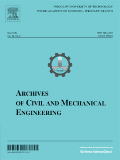
Archives of Civil and Mechanical Engineering
Championing High-Quality Research in EngineeringArchives of Civil and Mechanical Engineering is a distinguished peer-reviewed journal published by SpringerNature, focusing on advancing the fields of civil and mechanical engineering. With an impressive Q1 ranking in both categories in 2023, this journal caters to a global audience, addressing the evolving challenges and innovations within these vital engineering disciplines. The journal has been a pivotal platform since its inception in 2006, and it continues to be essential for researchers and practitioners seeking to publish and access high-quality research. The absence of an Open Access option ensures that published works maintain rigorous academic standards, thereby enhancing their value within institutional repositories. With a robust impact factor and high visibility on Scopus—ranking #122 out of 672 in Mechanical Engineering and #74 out of 379 in Civil and Structural Engineering—this journal is an ideal venue for professionals, researchers, and students dedicated to advancing their knowledge and contributing to cutting-edge engineering practices. Based in Germany and operating internationally, the Archives of Civil and Mechanical Engineering invites submissions that address critical issues and solutions in contemporary engineering.

Journal of Materials and Engineering Structures
Unlocking Potential in Engineering InnovationsJournal of Materials and Engineering Structures is a pioneering Open Access journal published by MOULOUD MAMMERI UNIVERSITY OF TIZI-OUZOU, dedicated to advancing the field of materials science and engineering. Since its inception in 2014, the journal has aimed to provide researchers, professionals, and students with a platform for sharing cutting-edge research and innovative applications in materials engineering and construction structures. Although the HIndex and Scopus ranking data are not specified, the journal plays a crucial role in disseminating knowledge that contributes to the development of sustainable and efficient engineering practices. With its commitment to accessibility and knowledge sharing in the heart of Algeria, the Journal of Materials and Engineering Structures is poised to make a significant impact on both local and global academic communities.
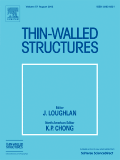
THIN-WALLED STRUCTURES
Elevating Standards in Civil and Mechanical EngineeringTHIN-WALLED STRUCTURES is a premier international journal published by Elsevier Science Ltd, focusing on the critical areas of Building and Construction, Civil and Structural Engineering, and Mechanical Engineering. With an impressive impact factor and categorization in the Q1 quartile of each respective field, this journal stands at the forefront of engineering research, boasting commendable Scopus rankings—52nd for Mechanical Engineering, 18th for Building and Construction, and 32nd for Civil and Structural Engineering. Since its inception in 1983, THIN-WALLED STRUCTURES has provided a vital platform for disseminating innovative research, practical applications, and theoretical advancements in thin-walled structures, encouraging the development of safer and more efficient design methodologies. Although it operates on a traditional access model, the journal is committed to maintaining high-quality peer review and publishing, making it an essential resource for researchers, professionals, and students aiming to contribute to and benefit from the latest advancements in this dynamic field.
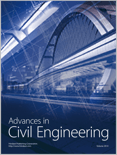
Advances in Civil Engineering
Shaping Tomorrow's Civil Engineering TodayAdvances in Civil Engineering is a leading peer-reviewed journal published by HINDAWI LTD, dedicated to advancing knowledge and innovation in the field of civil and structural engineering. Holding an esteemed Q2 ranking in the 2023 category for Civil and Structural Engineering, this journal serves as a vital platform for disseminating cutting-edge research and practical applications that address contemporary challenges in infrastructure development, sustainable design, and material science. Launched in 2008 and operating as an Open Access journal since 2009, it promotes the free exchange of ideas by ensuring that all articles are accessible to researchers, professionals, and students globally. The journal is also indexed in Scopus, ranking at #142 out of 379 in its category, situating it within the 62nd percentile of its peers. With a focus on interdisciplinary collaboration and innovative solutions, Advances in Civil Engineering contributes significantly to the ongoing evolution of engineering practices and education, making it an essential resource for anyone involved in or studying the ever-evolving field of civil engineering.
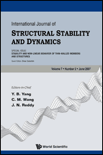
International Journal of Structural Stability and Dynamics
Innovating the Future of Structural Engineering.International Journal of Structural Stability and Dynamics is a renowned academic journal published by World Scientific Publishing Co. Pte. Ltd., based in Singapore. With an ISSN of 0219-4554 and an E-ISSN of 1793-6764, this journal serves as a vital platform for disseminating pioneering research in the fields of Aerospace Engineering, Applied Mathematics, Building and Construction, Civil and Structural Engineering, Mechanical Engineering, and Ocean Engineering. It holds impressive positionings within category quartiles—ranking Q1 in Building and Construction and Q2 in other relevant disciplines as of 2023—demonstrating its impact and significance within these scholarly arenas. The journal's Scopus rankings signify its commitment to quality research, with notable percentiles that place it among the top journals in applied mathematics and various engineering domains. As it converges from 2004 to 2024, the International Journal of Structural Stability and Dynamics remains dedicated to advancing knowledge and fostering innovations in structural engineering, making it an indispensable resource for researchers, professionals, and students alike.

Geomechanics and Engineering
Empowering Engineers with Cutting-edge ResearchGeomechanics and Engineering is a premier journal published by TECHNO-PRESS that delivers high-quality research in the fields of civil and structural engineering, as well as geotechnical engineering and engineering geology. With an ISSN of 2005-307X and an E-ISSN of 2092-6219, this journal serves as a significant repository of innovative methodologies, case studies, and theoretical advancements. Located in South Korea, Geomechanics and Engineering is indexed in Scopus, where it boasts a commendable ranking of #100 out of 379 in Civil and Structural Engineering and #69 out of 229 in Geotechnical Engineering and Engineering Geology, reflecting its impact with substantial percentile rankings of 73rd and 70th, respectively. Over its converged years from 2009 to 2024, the journal aims to advance the understanding of geomechanical phenomena and their application in engineering, making it an essential read for researchers, professionals, and students committed to solving today's pressing engineering challenges.
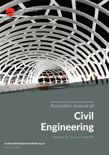
Australian Journal of Civil Engineering
Advancing the Future of Civil EngineeringThe Australian Journal of Civil Engineering, published by Taylor & Francis Ltd, stands as a pivotal platform within the field of civil and structural engineering. With an ISSN of 1448-8353 and an E-ISSN of 2204-2245, this journal consistently delivers high-quality research and innovative practices from both established and emerging scholars in the discipline. Recognized in the Q2 category for Civil and Structural Engineering in 2023, it holds a respectable position, ranking 146 out of 379 within its field according to Scopus, which places it in the 61st percentile. Converging valuable insights from 2011 through 2024, the journal encompasses a broad scope of topics, including sustainable infrastructure, innovative materials, and advanced construction techniques, thereby addressing contemporary challenges faced by engineering professionals. Though it is a traditional publication without open access options, the quality of the research featured ensures that it remains an essential resource for academics, practitioners, and students striving to enhance their knowledge and contribute to the dynamic field of civil engineering.
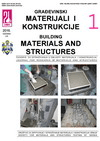
Gradevnski Materijiali I Konstrukcije-Building Materials and Structures
Unleashing potential in structural engineering and material science.Gradevnski Materijiali I Konstrukcije - Building Materials and Structures is a premier open-access journal dedicated to advancing the field of construction materials and structural engineering. Published by SOC MATERIALS & STRUCTURES TESTING SERBIA, this journal provides a platform for researchers, professionals, and students to share their innovative findings and developments in building materials. With a commitment to open-access since 2012, it fosters unrestricted availability of research for a wider audience, encouraging collaboration and knowledge dissemination. The journal features a diverse range of topics, including material testing, structural integrity, and sustainable construction practices, making it a vital resource for those engaged in the design and analysis of structural components. By fostering the advancement of research and practice in this crucial sector, Gradevnski Materijiali I Konstrukcije plays an essential role in shaping the future of construction and material science.

ACI STRUCTURAL JOURNAL
Transforming Ideas into Concrete Solutions for the Built EnvironmentThe ACI Structural Journal, published by the American Concrete Institute, serves as a premier platform for scholarly articles and research findings in the fields of building and construction and civil and structural engineering. With a commitment to advancing concrete technology and its applications, this journal has amassed an impressive reputation, holding a Q2 ranking in both Building and Construction and Civil and Structural Engineering categories as of 2023. The journal’s focus on innovative research and practical applications enables professionals, researchers, and students to stay at the forefront of industry developments. Although it does not offer open access, the content bears significant impact, ensuring that readers engage with high-quality research. As the journal converges its years of publication from 1987 to 2024, it continues to enrich the academic and professional discussions surrounding structural engineering and concrete science.